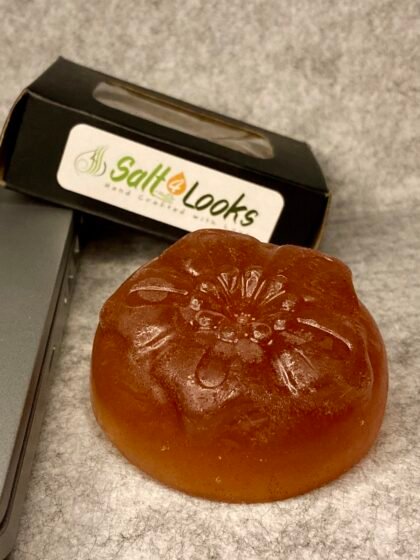Chemical Peels and Your Skin-A Complete Guide

What is a Chemical Peel?
A chemical peel is a cosmetic procedure used in skincare to improve the appearance of the skin on the face, neck, or hands. It involves applying a chemical solution to the skin, which causes the outermost layer to peel off. The process leads to the regeneration of new skin cells, resulting in smoother, more even-toned, and youthful-looking skin.
There are various types of chemical peels available, ranging from mild to deep, depending on the specific skin concerns and the desired level of exfoliation. The three main types of chemical peels are:
-
- Superficial or Light Peels: These peels use mild acids, such as alpha hydroxy acids (AHAs) or beta hydroxy acids (BHAs), to exfoliate only the outermost layer of the skin (epidermis). They are often used to improve skin texture, reduce fine lines, and treat mild discolorations or acne.
- Medium Peels: These peels penetrate deeper into the skin, targeting the epidermis and the upper layers of the dermis. Trichloroacetic acid (TCA) is commonly used for medium peels. They can address more significant skin concerns, such as moderate wrinkles, pigmentation issues, and sun damage.
- Deep Peels: Deep peels reach the deeper layers of the dermis, using strong chemicals like phenol. They are used to treat severe skin conditions, deep wrinkles, and extensive sun damage. However, deep peels require more downtime and may carry more significant risks, so they are less commonly used than superficial or medium peels.
The chemical peel procedure usually starts with thorough cleansing of the skin, followed by the application of the chosen chemical solution. Patients may experience a tingling or burning sensation during the process. Afterward, the skin will peel over several days, and it is essential to follow proper aftercare instructions to ensure optimal healing and results.
Chemical peels can be an effective way to rejuvenate the skin, improve its texture and tone, reduce the appearance of fine lines, wrinkles, and hyperpigmentation. However, since it involves the use of chemicals, it’s essential to have the procedure performed by a qualified and experienced professional to minimize the risk of complications. Additionally, not everyone is a suitable candidate for chemical peels, and a consultation with a dermatologist or skincare specialist is recommended to determine if it’s the right option for an individual’s specific skin concerns.
What are the benefits of using Chemical Peels?
Chemical peels offer several benefits for the skin, depending on the type and depth of the peel used. Some of the main advantages include:
-
- Skin Exfoliation: Chemical peels effectively remove the outermost layer of dead skin cells, promoting cellular turnover. This process reveals fresher, smoother, and more radiant skin.
- Improved Skin Texture: By removing dead skin cells and stimulating collagen production, chemical peels can help improve the texture of the skin, making it softer and more even.
- Reduced Fine Lines and Wrinkles: Chemical peels can diminish the appearance of fine lines and wrinkles, particularly superficial lines, by encouraging collagen growth and plumping the skin.
- Treatment of Hyperpigmentation: Chemical peels can help fade dark spots, sunspots, and other forms of hyperpigmentation, leading to a more even skin tone.
- Acne and Acne Scar Improvement: Light to medium chemical peels can be effective in treating acne and reducing the appearance of acne scars by unclogging pores and stimulating skin regeneration.
- Minimized Pore Size: Some chemical peels can help reduce the size of enlarged pores, giving the skin a smoother appearance.
- Enhanced Skin Hydration: Chemical peels can improve the skin’s ability to retain moisture, leading to better hydration and a healthier complexion.
- Brightened Complexion: As a result of exfoliation and the removal of dull, dead skin cells, chemical peels can give the skin a more radiant and glowing appearance.
- Boosted Collagen Production: Chemical peels stimulate collagen synthesis, which is essential for maintaining skin elasticity and firmness.
- Anti-Aging Effects: Regular use of chemical peels can contribute to long-term anti-aging benefits by keeping the skin fresh, promoting collagen, and reducing the appearance of age-related skin concerns.
- Customizable Treatments: Chemical peels come in various types and strengths, allowing skincare professionals to customize treatments according to an individual’s specific skin concerns and needs.

Are there any disadvantages of using Chemical Peels?
While chemical peels can be effective and beneficial for many individuals, they also come with certain disadvantages and potential risks. It’s essential to be aware of these drawbacks before deciding to undergo a chemical peel. Some disadvantages include:
-
- Skin Irritation and Sensitivity: Chemical peels can cause skin irritation, redness, and sensitivity, especially for individuals with sensitive or reactive skin. In some cases, the skin may experience burning, stinging, or discomfort during the treatment and recovery period.
- Post-Treatment Downtime: Depending on the depth and strength of the peel, the recovery period can range from a few days to several weeks. During this time, the skin may peel, become dry, and may require extra care and sun protection.
- Risk of Complications: Chemical peels can carry the risk of complications, especially if not performed correctly or used on unsuitable skin types. Potential complications include scarring, infection, changes in skin pigmentation, and excessive peeling.
- Sun Sensitivity: After a chemical peel, the skin becomes more sensitive to the sun’s harmful rays. It is crucial to avoid direct sun exposure and use broad-spectrum sunscreen regularly to protect the healing skin and prevent hyperpigmentation.
- Uneven Results: The outcome of a chemical peel may not always be entirely predictable, especially with deeper peels. In some cases, there might be variations in the peeling process, leading to uneven results.
- Multiple Sessions: For individuals seeking significant improvements, a series of chemical peel sessions may be necessary. This can lead to increased costs and time commitments.
- Temporary Discomfort: During the peeling process, the skin may feel tight, itchy, and uncomfortable, which can be bothersome for some individuals.
- Not Suitable for All Skin Types: Certain skin types and conditions may not be suitable for chemical peels due to the risk of adverse reactions or lack of desired results.
- Possible Incomplete Results: Depending on the depth and type of peel used, some skin concerns, such as deep wrinkles or scars, may not be fully addressed with chemical peels alone.
- Long-Term Maintenance: To maintain the results achieved from a chemical peel, individuals may need to undergo periodic touch-up treatments, which can be an ongoing commitment.
It’s important to have a consultation with a qualified dermatologist or skincare professional before undergoing a chemical peel to determine if it is the right treatment for your specific skin concerns and to understand the potential risks and benefits. They can help you choose the most appropriate peel type, strength, and aftercare plan to achieve the desired results safely.
Are chemical peels safe for all skin types?

While chemical peels can be beneficial for many skin types and concerns, there are certain skin conditions and circumstances where the procedure may not be suitable or may require extra caution. Here are some situations where a chemical peel may not be recommended:
-
- Sensitive or Reactive Skin: Individuals with highly sensitive or reactive skin may not tolerate chemical peels well. The potent ingredients in some peels can cause irritation, redness, and discomfort for sensitive skin types.
-
- Active Skin Infections: Chemical peels should not be performed on skin that has active infections, such as cold sores, open wounds, or active acne breakouts. Applying a peel to infected skin can worsen the condition and lead to complications.
-
- Eczema or Dermatitis: People with eczema, atopic dermatitis, or other chronic skin conditions may experience increased irritation and inflammation with chemical peels. These skin types are generally more sensitive and may not respond well to the exfoliating agents in chemical peels.
-
- Sunburned or Tanned Skin: Chemical peels should not be performed on sunburned or tanned skin, as it may cause severe irritation and uneven results.
-
- History of Keloid Scarring: Individuals with a history of keloid or hypertrophic scarring should avoid chemical peels, especially deep peels, as they may increase the risk of developing excessive scar tissue.
-
- Pregnancy and Breastfeeding: While there isn’t a significant amount of evidence to suggest that chemical peels are harmful during pregnancy or breastfeeding, many healthcare professionals prefer to err on the side of caution and avoid aggressive chemical peels during these periods.
-
- Use of Certain Medications: Some medications, such as isotretinoin (Accutane) for acne, may increase skin sensitivity and compromise the healing process. Patients using these medications should wait until they have stopped taking them before considering a chemical peel.
-
- Recent Facial Procedures: Individuals who have undergone certain facial procedures, such as laser treatments, microdermabrasion, or facial surgery, should consult with their healthcare provider before getting a chemical peel. Depending on the specific procedure and skin condition, it may be best to wait until the skin has fully healed.
If you are considering a chemical peel, it’s crucial to consult with a qualified dermatologist or skincare professional to assess your skin type, conditions, and medical history. They can recommend the most suitable type of chemical peel and develop a personalized treatment plan to achieve the desired results while minimizing the risk of complications.
What should you keep in mind while buying Chemical Peel products for home usage?

When purchasing chemical peel products for at-home use or for professional treatments, there are several important factors to consider to ensure safety, effectiveness, and the best possible results. Here are some key points to keep in mind:
-
- Ingredients: Check the list of ingredients in the chemical peel product. Look for reputable brands that use well-known and clinically tested exfoliating agents, such as glycolic acid, lactic acid, salicylic acid, or other alpha hydroxy acids (AHAs) and beta hydroxy acids (BHAs). Make sure the concentration of the active ingredient is appropriate for your skin type and concerns.
-
- pH Level: The pH level of the chemical peel is critical for its effectiveness. Ensure that the product has the appropriate pH to provide the desired exfoliation without causing excessive irritation.
-
- Type and Strength: Chemical peels come in various types and strengths (e.g., superficial, medium, or deep). Choose a peel that aligns with your skin concerns and sensitivity level. For at-home use, it’s generally safer to start with milder peels and work your way up, if necessary.
-
- Professional vs. At-Home Use: Some chemical peels are designed for professional use only and should not be used at home due to their potency. Be cautious when selecting products for personal use and follow the instructions carefully.
-
- Skin Type and Concerns: Consider your skin type, such as oily, dry, combination, or sensitive, and any specific skin concerns you wish to address (e.g., acne, hyperpigmentation, fine lines). Different peels work better for certain skin types and conditions, so choose accordingly.
-
- Patch Testing: Before applying a chemical peel to your entire face or treatment area, conduct a patch test on a small area of your skin to check for any adverse reactions or allergies.
-
- pH Neutralizer: Some chemical peels require a pH neutralizer to stop the peeling process. Check if the product includes a neutralizer or if you need to purchase it separately.
-
- Professional Guidance: If you’re new to chemical peels or have specific skin concerns, consider consulting with a dermatologist or skincare professional before using at-home chemical peel products. They can provide personalized advice and recommendations.
-
- Safety and Certification: Ensure that the product complies with relevant safety standards and regulations. Look for products that are approved or certified by relevant authorities.
-
- Reviews and Reputation: Read reviews and testimonials from other users to get an idea of the product’s efficacy and potential side effects. Choose products from reputable brands with a positive reputation in the skincare industry.
-
- Instructions and Precautions: Follow the product’s instructions and safety precautions meticulously. Chemical peels are potent treatments and must be used with care to avoid complications.
Always remember that chemical peels, even for at-home use, are serious treatments that may not be suitable for everyone. If you have any doubts or concerns, consult a dermatologist or skincare professional to ensure that chemical peels are safe and appropriate for your skin.








